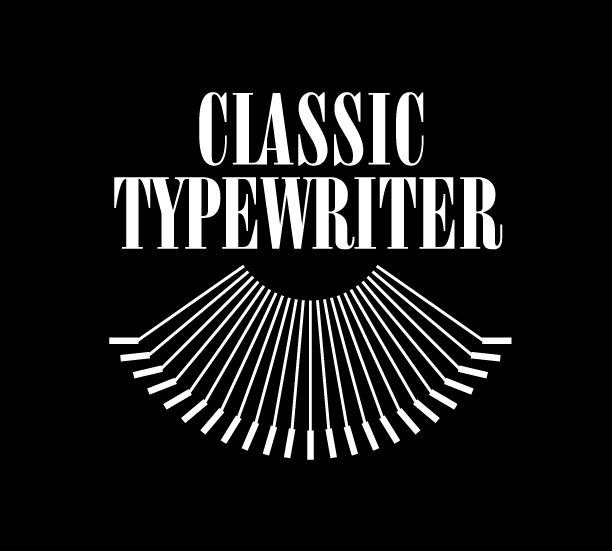The Complete Guide to Typewriter Ribbons: Materials, Sizes, and Historical Context
1937 Smith Corona Standard with original vintage metal ribbon spools.
Typewriters, whether vintage or modern, require one essential consumable to function: the typewriter ribbon. While ribbons might seem like a simple accessory, their materials, spool sizes, and historical evolution reveal a fascinating story. In this guide, we’ll explore the differences between cotton, silk, and nylon ribbons, explain spool types and ribbon sizes, and discuss the historical shift to a standardized ribbon size for manual typewriters.
What Is a Typewriter Ribbon?
A typewriter ribbon is a thin strip of fabric or synthetic material saturated with ink. When a typewriter’s typebars strike the ribbon, the ink transfers to paper, creating letters and symbols. The choice of ribbon material and size plays a significant role in the clarity, durability, and feel of the typed text.
Ribbon Materials: Cotton, Silk, and Nylon
Not all typewriter ribbons are created equal. The material used can affect the ribbon’s performance, longevity, and aesthetic appeal.
1. Cotton Ribbons
Cotton ribbons are the most traditional and widely used material for typewriter ribbons. Known for their durability and ink absorption, cotton ribbons produce a slightly textured and vintage appearance on paper. They are often favored for their authentic feel when restoring antique typewriters. However, cotton ribbons may dry out faster than other materials if not stored properly.
2. Silk Ribbons
Silk ribbons were the premium choice for typewriters in the early 20th century. Their fine weave allowed for smoother ink distribution and a crisper print quality compared to cotton. Silk ribbons also had a luxurious feel, making them popular for high-end correspondence or professional documents. However, they are less common today due to their higher cost and limited availability.
3. Nylon Ribbons
Nylon ribbons are the modern standard for most typewriters. They are lightweight, highly durable, and hold ink well. Nylon’s flexibility allows for a consistent typing experience, and it is less prone to drying out compared to cotton or silk. Its affordability and long shelf life make nylon the practical choice for regular use.
Understanding Spools and Ribbon Sizes
The compatibility of your typewriter with a particular ribbon depends on spool size and ribbon length. These details are crucial when buying replacements.
Spool Types
Universal Spools: Modern universal spools are designed to fit a wide variety of typewriters, making them a convenient choice for most users.
Proprietary Spools: Vintage and specialty typewriters may require spools unique to their brand or model. Collectors often need to wind new ribbons onto old spools to maintain authenticity.
Ribbon Sizes
Most typewriter ribbons are 1/2 inch (12.7 mm) in width. This standard emerged in the mid-20th century, allowing manufacturers to produce ribbons compatible across various models. Some older typewriters, particularly those from the early 1900s, used wider ribbons—up to 3/4 inch (19 mm)—which are less common today.
The Historical Shift to Standardized Ribbon Sizes
The early days of typewriters saw no consistency in ribbon sizes, materials, or spools. Manufacturers like Remington, Underwood, and Oliver each used proprietary designs, making ribbons incompatible across brands. This lack of standardization was both a marketing strategy and a logistical hurdle.
By the mid-20th century, as typewriters became essential tools for businesses, the need for interchangeable parts became clear. The adoption of the 1/2-inch ribbon as a standard size simplified manufacturing and reduced costs for both producers and consumers. This shift allowed office supply stores to stock ribbons that worked across a variety of machines, contributing to the widespread popularity of typewriters.
How to Choose the Right Ribbon for Your Typewriter
Selecting the best ribbon for your typewriter involves considering both the machine and your personal preferences:
Check Compatibility: Confirm your typewriter’s spool size and ribbon width.
Choose the Material: Nylon is ideal for regular use, while cotton and silk are better suited for restoration or special projects.
Consider Dual-Color Options: Many ribbons come in dual colors, typically black and red, for emphasis or specific typing tasks.
Caring for Your Typewriter Ribbon
To maximize the lifespan of your ribbon:
Store Properly: Keep ribbons in a cool, dry place to prevent ink from drying out.
Rewind Regularly: If your typewriter allows, rewind ribbons to distribute ink evenly.
Replace as Needed: Ribbons should be replaced when the print becomes faint or uneven.
Conclusion
Typewriter ribbons might seem like a small detail, but they play a significant role in the functionality and charm of these timeless machines. Understanding the differences in materials, spools, and ribbon sizes—and the historical context of standardization—can enhance your appreciation for typewriters and ensure you select the perfect ribbon for your needs.
Whether you’re typing a heartfelt letter, drafting a novel, or preserving a piece of history, the right ribbon makes all the difference. Choose wisely, and happy typing!

